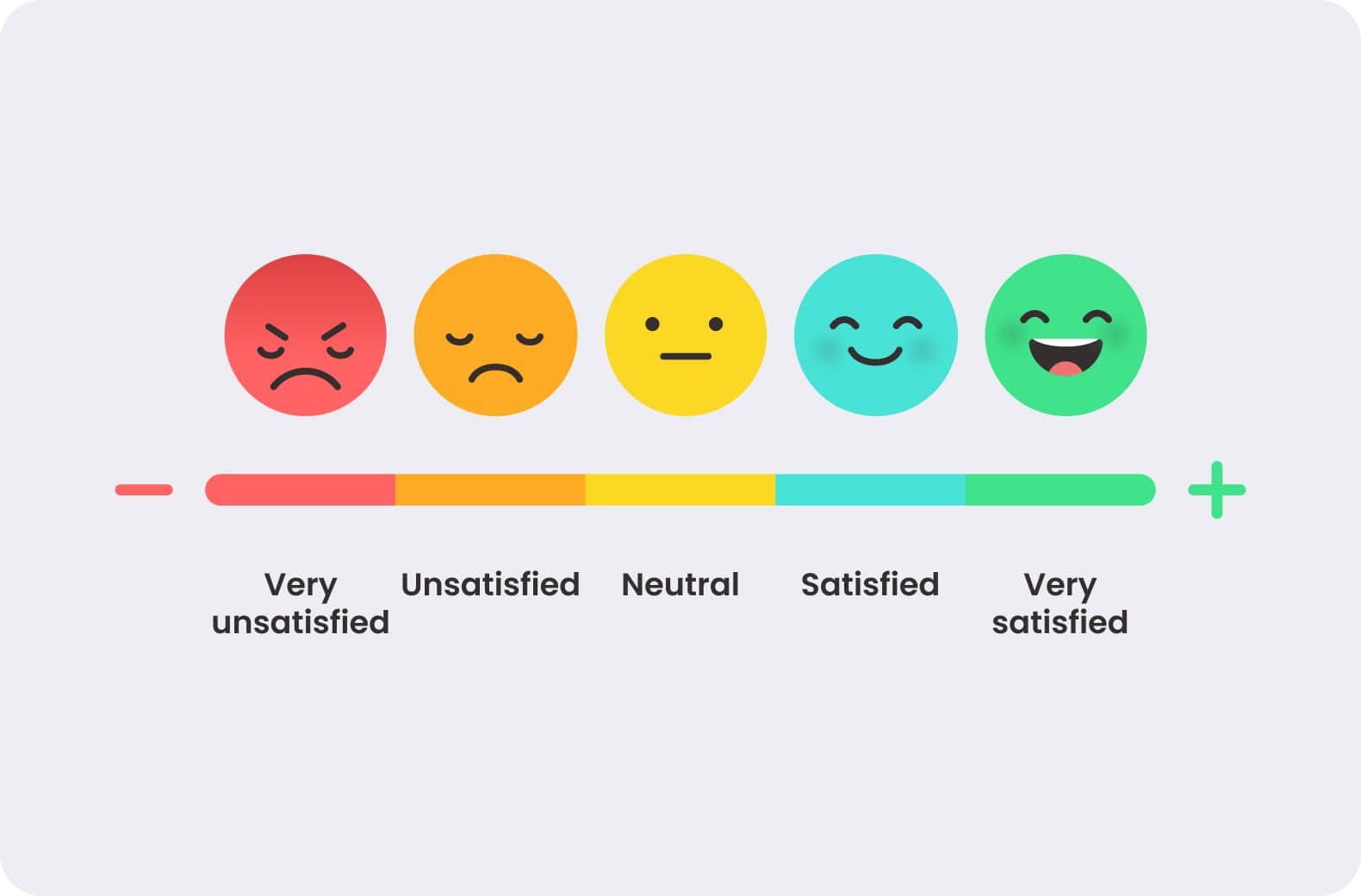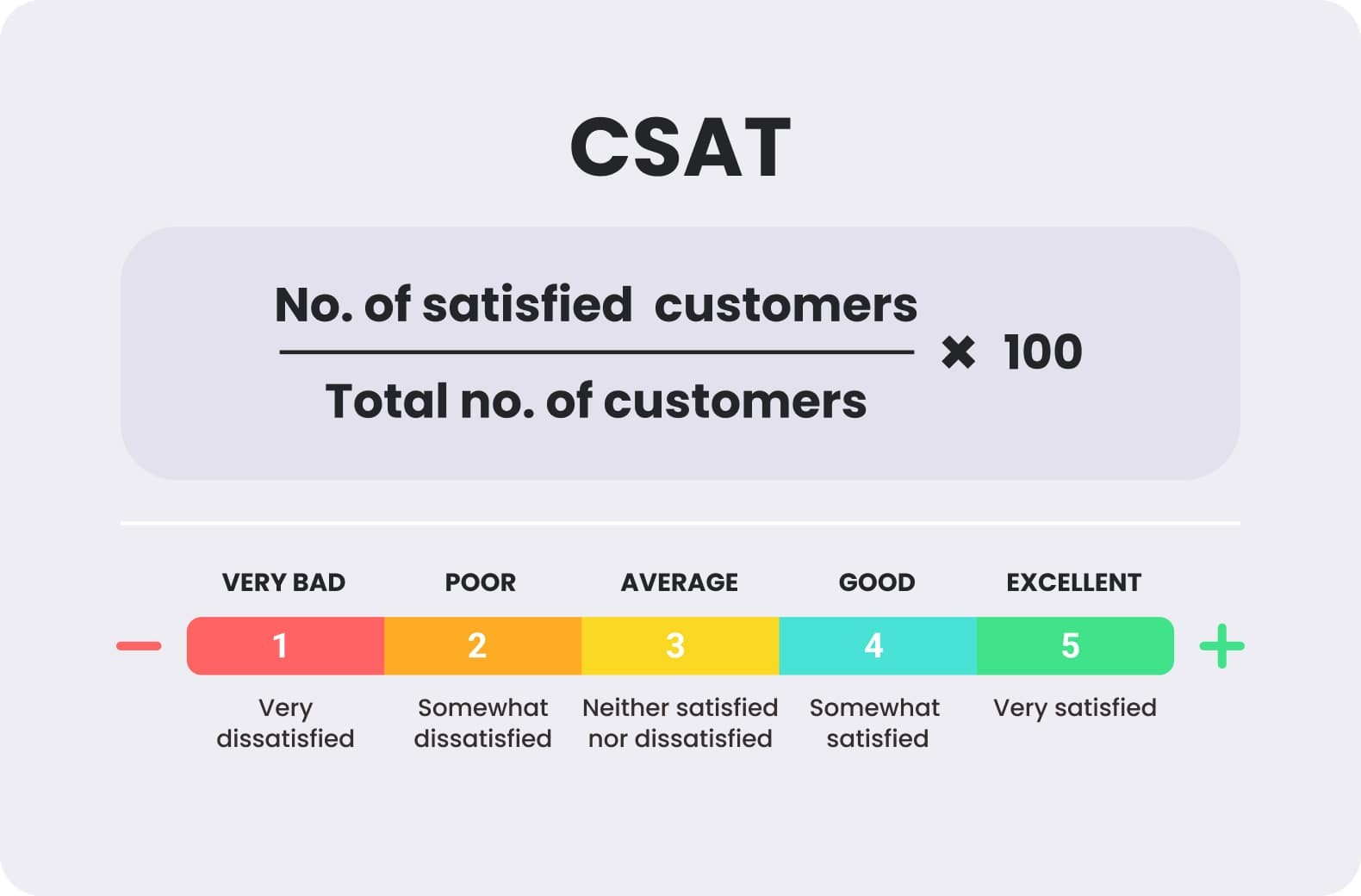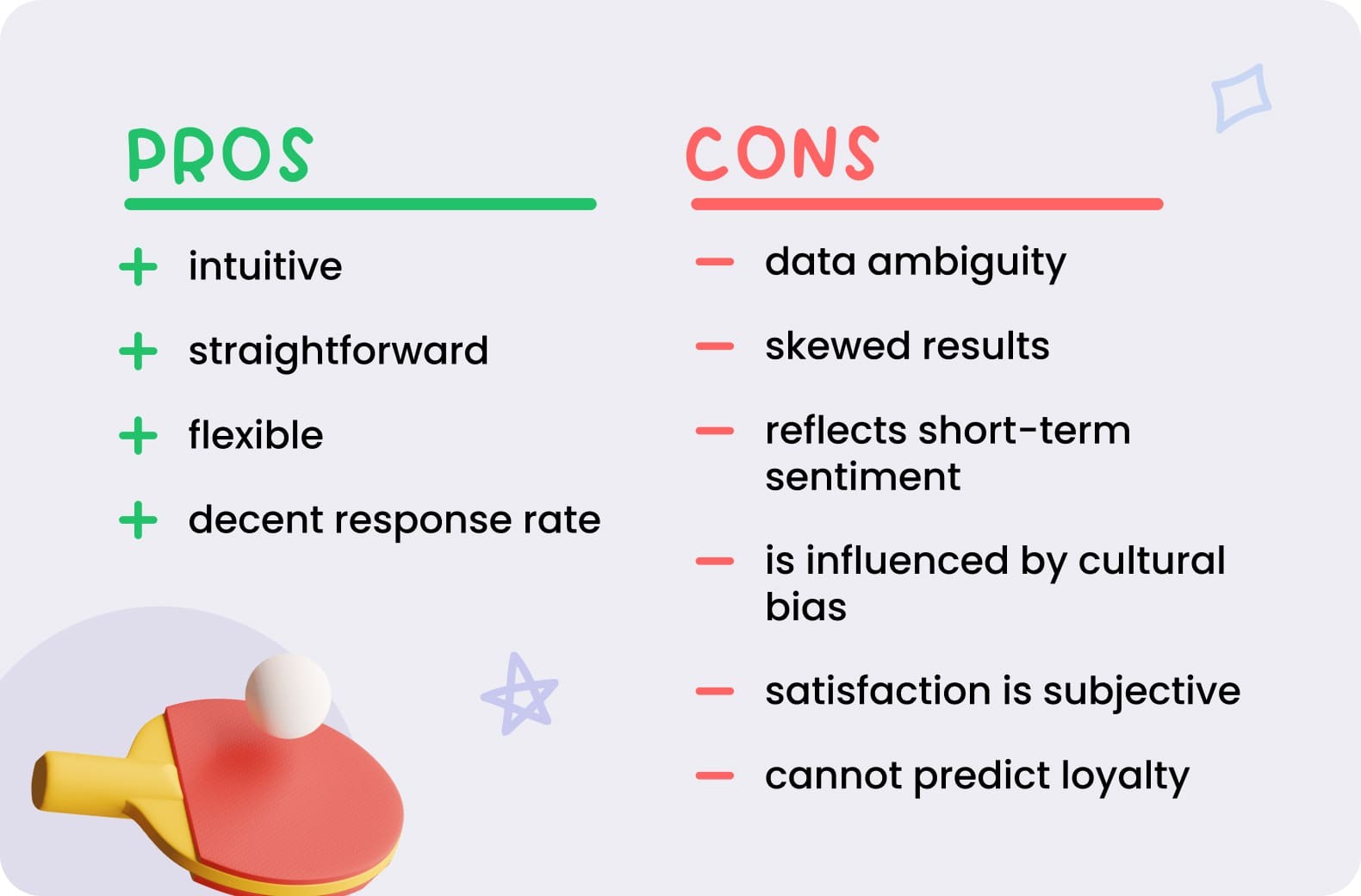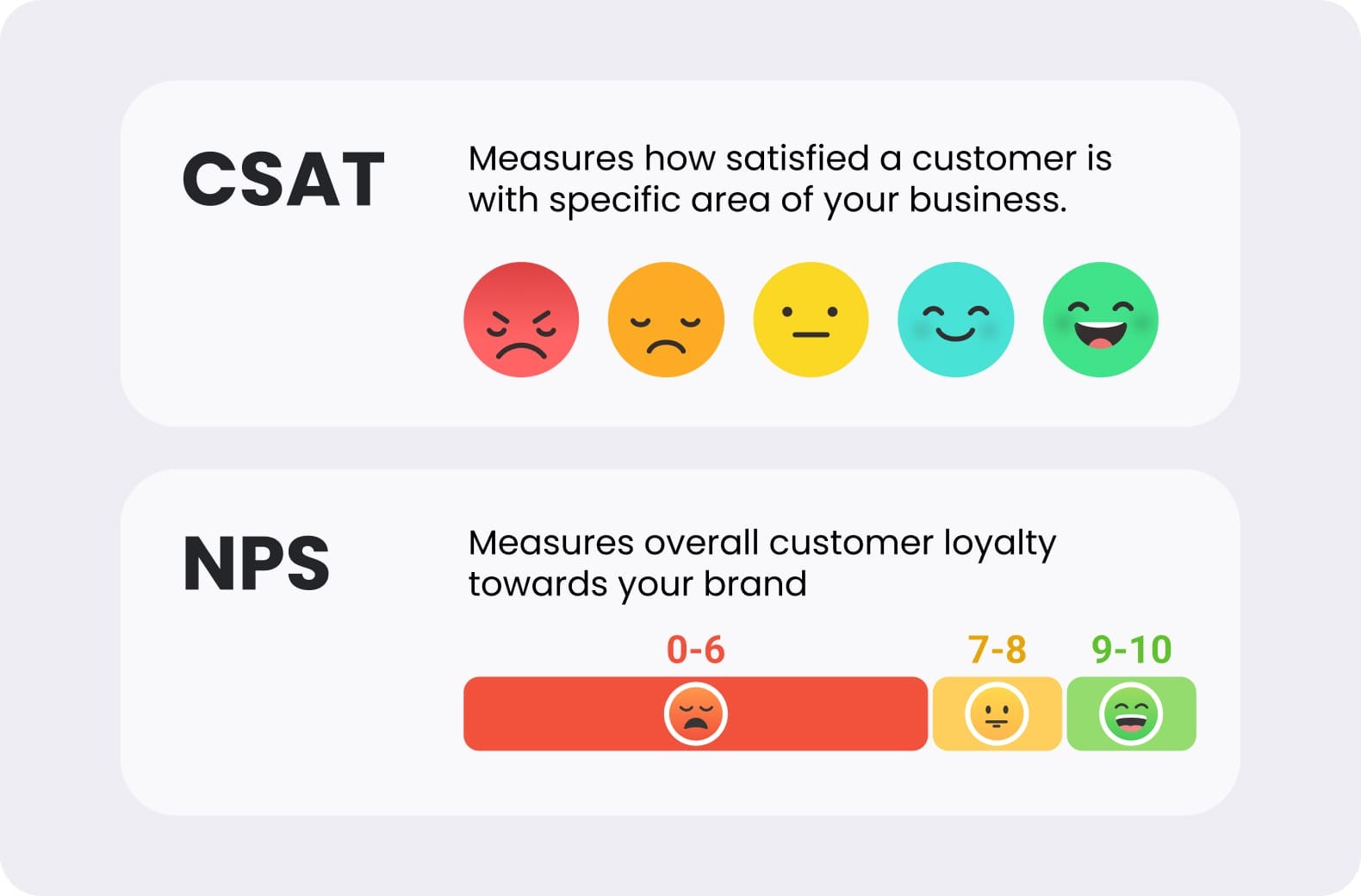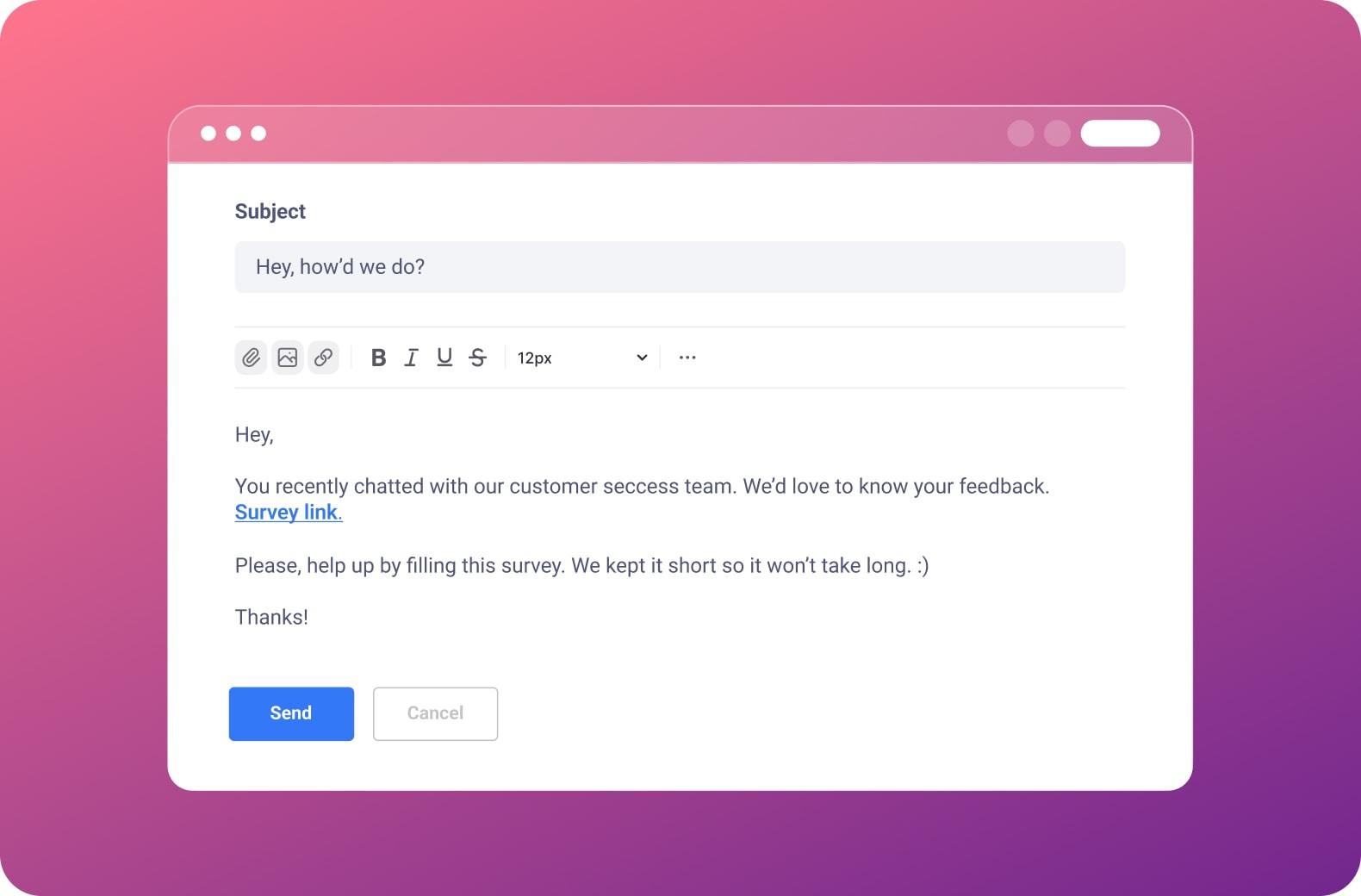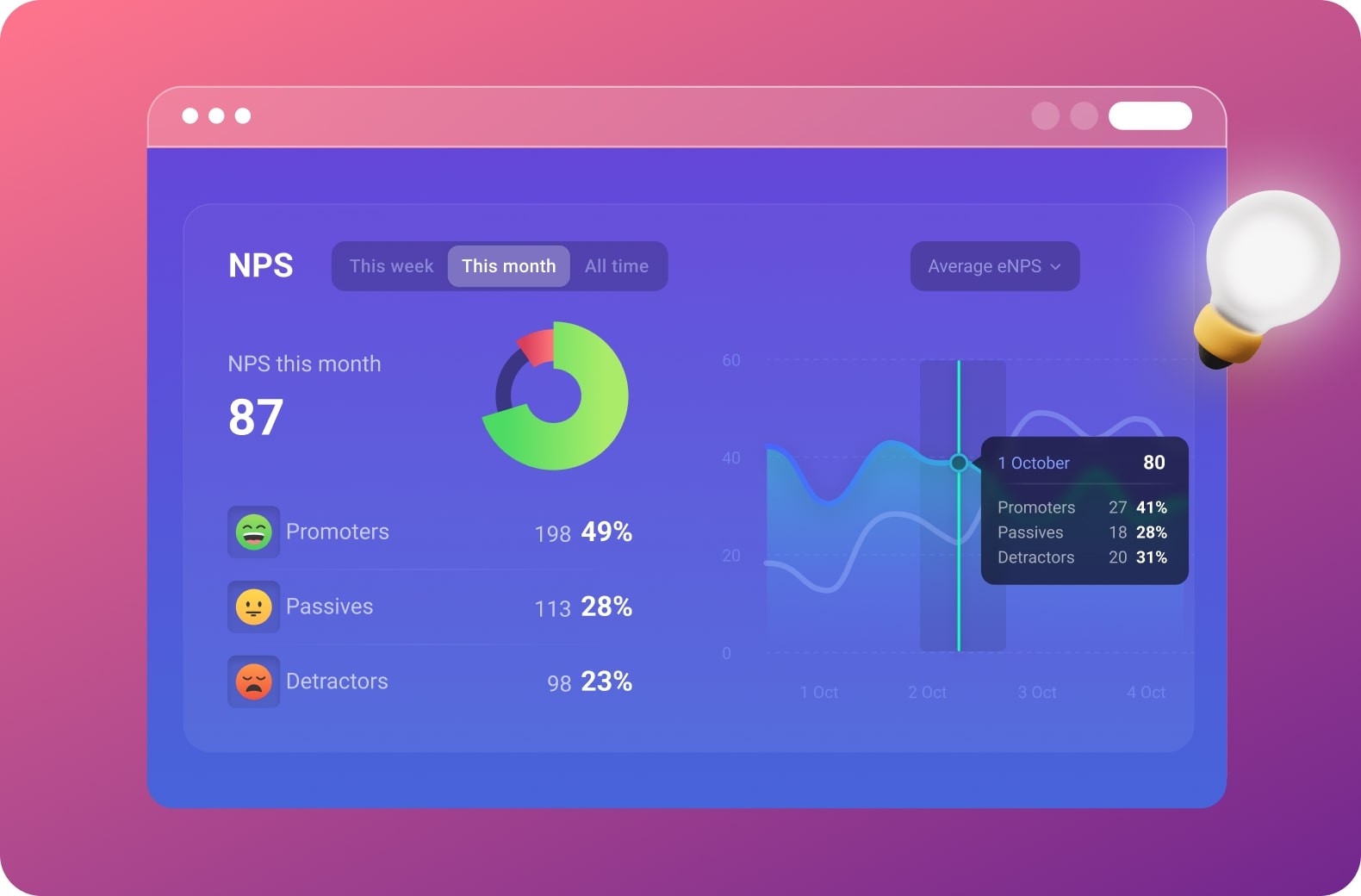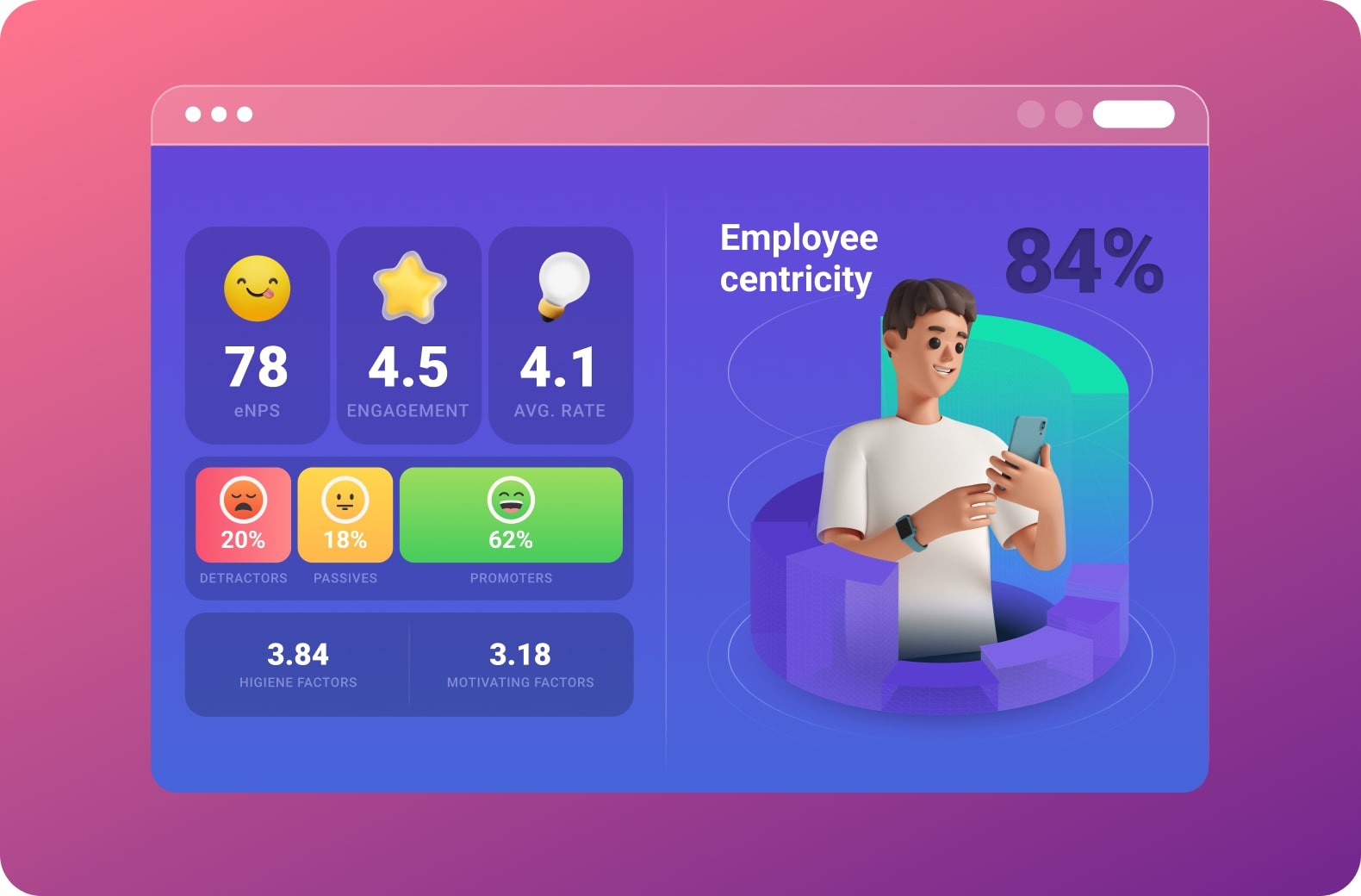In this article, we’ll cover:
- The basics of customer satisfaction
- How to measure customer satisfaction and your CSAT score
- The pros and cons of CSAT surveys
- How CSAT differs from other metrics like net promoter score (NPS) and customer effort score (CES)
- How to use customer satisfaction metrics and improve your CSAT score
- How to create a CSAT survey tailored to your specific needs
What is customer satisfaction?
In general terms, customer satisfaction refers to how well a company can meet and exceed a customer’s expectations. Your products, services, customer service, and brand all play a vital role in the customer experience, and it’s your responsibility to consistently work towards improving the customer journey.
When consumers choose to invest in your products or services, there is an expectation that you will deliver on your promises. When you go above and beyond, you can expect a higher rate of customer satisfaction. Similarly, when you’re doing the bare minimum to stay in business, you’ll likely see a decline in customer satisfaction and retention.
The importance of satisfied customers
According to Hubspot, 68% of consumers report that they would pay more for a brand with a good reputation for customer service. Salesforce research shows that 78% of consumers are willing to continue doing business with a company even after a mistake, as long as they show commitment to customer service.
What does CSAT mean?
CSAT refers to your customer satisfaction score, which is, as it implies, a measuring tool to reflect customer satisfaction. A customer success manager will use this kind of helpful metric as a growth indicator.
Focus on predictions instead of the past
While financial metrics are often used to measure the performance of a company in the past over a specified period of time, customer metrics are a way to measure a company’s current success. The power of customer metrics like CSAT lies in the ability to predict future expectations and satisfaction. Companies will use CSAT surveys to gain insights into how satisfied customers are feeling based on their experiences with your business. Survey responses can be focused on customer interaction or specific product offerings. By offering these surveys, marketing managers are able to evaluate potential pain points to come up with well-matched solutions.
CSAT surveys typically offer answers based on a rating scale. Instead of asking yes or no questions, CSAT surveys allow customers to rate their satisfaction from one to five. These numbers represent the customer sentiment from “strongly disagree” to “strongly agree.”
How do you calculate your CSAT score?
Before you can even think about calculating your CSAT scores, you need to send out a customer satisfaction survey to your chosen sample group. After you get the results of your customer satisfaction survey, you can calculate your score in two different ways. Both are focused on the rating scale results but differ slightly in how you use them.
Composite customer satisfaction score
Your composite customer satisfaction score is simply an average of all your survey scores. The formula for this score is simple. Add up the actual scores in all your surveys, then divide that by the maximum sum of possible scores. Multiply this result by 100 and you’re left with your composite score in percentage form.
While this certainly gives you an idea of how you’re doing in a very basic sense if you want to get a better look at customer satisfaction, make sure you calculate your detailed customer satisfaction score as well.
Detailed customer satisfaction score
The detailed customer satisfaction score is a little bit different than the composite score, mainly because it focuses on positive responses or those who report being “satisfied” or better. The detailed score focuses on your happy customers, giving you a better indication of where you stand. In order to calculate your detailed customer satisfaction score, add up the total number of responses for “satisfied” and “very satisfied” customers.
When you have that number, divide it by the number of responses in total. Finally, multiply this by 100 and you are left with your detailed customer satisfaction score (or percentage).
If you’re wondering why it’s better just to focus on the positive responses, that’s because satisfied responses are high indicators of customer retention.
What is a good customer satisfaction score?
If you’re thinking about your CSAT strategy, you’re probably wondering what your goal score should be. There are no hard and fast rules because what makes a good score will differ from industry to industry.
However, most marketers will agree that a positive score is anything in the 75-85 % range. Of course, you want to score as high as possible, but the first step to a great score is ensuring you at least fall into the ideal range. If you find that your score is below this range, you’ll want to take a look at all your customer satisfaction surveys and focus on the areas with negative feedback.
Don’t let this discourage you though. Honest feedback is the best kind of feedback because it gives you a real chance to improve and implement lasting changes.
What are the pros and cons of CSAT?
Benefits of tracking your CSAT score
Your CSAT scores are a direct indication of how your customers feel about your products, services, and ability to provide an exceptional customer experience.
Understand customers expectations
When you start tracking your CSAT score, you’ll be able to monitor new customers as they move through the customer lifecycle.
Improved customer retention
It pays to have the same customer return to your business. Not only are you already more aware of their expectations, but you can make deeper insights as you continue to monitor your satisfaction scores.
Show compassion towards unhappy customers
If your customer’s satisfaction is your ultimate goal, you can obviously expect to see an increase in your satisfaction scores. Your customers are the backbone of your business, not your marketing or finance department. Getting on the same page with your customers allows you to be more compassionate towards their needs.
Reduce customer churn
Customer churn refers to any time customers stop doing business with a company. When you’re better prepared to meet customer expectations there’s less of a chance that you’ll lose valuable customers. The more you’re able to meet customer expectations, the better chance you have to reduce churn.
Cons of using CSAT score
CSAT doesn’t work for overall customer satisfaction
Context isn’t always there
If there isn’t room to offer context around the customer experience it can be difficult to discern exactly were something went wrong.
CSAT answers can be misleading
Depending on who is completing the survey, you might get two different answers for the same customer experience. For example, what one person considers “very good,” someone else might see as “good.” Customer satisfaction surveys have their limitations, which is why it’s so important to pay attention when you’re coming up with questions.
How does CSAT differ from net promoter score (NPS) and customer effort score (CES)?
When it comes to customer satisfaction metrics, you generally deal with NPS and CES, in addition to CSAT. Marketers usually choose these customer satisfaction metrics because they’re easy to implement and simple to understand.
CES (Customer Effort Score)
CES surveys are used to determine how easy you make the experience for the customer. If you make it harder for customers to move through the purchasing process, there’s a higher risk of churn. While CSAT does address satisfaction, a CES survey can pinpoint whether or not you have a streamlined business process.
NPS (Net Promoter Score)
The net promoter score represents the chances of your customers recommending your company to others. The main difference here is that NPS is solely focused on how well your company might perform in the future from word-of-mouth recommendations. It’s a very important metric though because it indicates whether or not to expect loyalty from your customers.
How to use CSAT surveys
The benefit of using CSAT surveys is that they can be tailored to fit your company’s products, services, and other needs at any point in the customer lifecycle. Depending on the nature of your business, you’ll want to address different customer touchpoints. Remember that all of your CSAT survey answers will come back in the form of a numerical scale.
Recommended times to use a CSAT survey
There are several scenarios in which you should look for customer feedback. Having a strategy is important so you’re sending out the right surveys at the right points during the customer journey.
Following a purchase:
If you have a new customer who made a recent purchase, you want to do everything you can to keep them coming back. Instead of doing damage control down the road, improve the customer experience from the beginning by following up right away. You can even offer a discount on their second purchase as a thank you for participating in the survey!
After customer support:
No matter which channel is used for customer support, make sure you follow up after any emails, phone calls, and in-person conversations.
Following new features or updates: if you’re trying out something new, you want to get valuable customer feedback as soon as possible. This way, you can make whatever tweaks might be necessary sooner rather than later. Customer feedback is more valuable when you get it closer to the time of interaction. So make sure you have all your follow-up measures in place!
How to improve your CSAT score
After you run the numbers you’ll be able to start making valuable changes to improve your customer satisfaction score.
Invest in your customer support agents
Repeat business is important because it’s much more affordable to focus on customer retention than acquisition. If you want to set your customers up for improved overall satisfaction, you need to make sure your customer service team has the resources and support it needs. In the same way, you try to improve upon the customer’s journey, you want to streamline the customer service process for your support agents as well. A positive employee experience will translate into good service, and help with your CSAT scores.
Empower your team with the right tools
Once you have your agents thoroughly trained, you’ll want to set them up with whatever CRM software and customer service tools apply to your company. It would benefit you greatly to implement some customer surveys after support finishes with a customer problem. This way you can get a sense of customer sentiment right after they finish interacting with your team.
Dissatisfied customers help your competitors
All it takes is one bad customer experience for you to lose a valuable shopper to a competitor. According to McKinsey, about half of consumers will switch to another brand after they have a negative customer experience. Allow that to happen more than once and you stand to lose up to 80% of consumers.
Be direct and transparent with your customers
At some point or another, your customer support agents will have to place people on hold. How you go about this will have a direct effect on customer experience. When a customer contacts your company for support, there’s a good chance they’re already feeling some kind of frustration. Do your best to mitigate that by being realistic about wait times. You never want to overpromise and underdeliver. You’re better off padding those wait times and if it doesn’t take as long as expected, your customer will start off their interaction being pleasantly surprised.
Enable self-service options
Self-service options are hugely beneficial for customer success. Not only does it save your support agents time, but it allows you to automate part of your business and make your existing customers feel in control. Your existing customers are valuable because you already know they’re invested in your product or service. In order to keep retention high, you need to make sure to provide consistent support throughout the entire customer lifetime. According to McKinsey in the article “How to improve the customer experience”, more than half of consumers would rather solve their problems on their own.
When to implement self-service
Your priority is ensuring that your customer feels like they are important to you. You can’t expect brand loyalty without a commitment to service and convenience. While you might not be able to automate all of your support tactics, there are a few to consider:
- Any time outside of your regular operating hours.
- Quick answers to common inquiries.
- When hold times are unreasonably long.
When to enforce live support
It would be unrealistic to think that you can automate every facet of your sales process and customer service experience. So, it’s important to know when to bring in live support. Having a strong customer support team is better for brand perception and will help you stay on top of customer sentiment, so you can avoid negative reviews and address negative feedback.
- Complicated issues: For anything that requires more detailed discussion, a live agent is much less frustrating that a chatbot.
- High-risk problems: If the nature of the is time sensitive, you want to make sure your customer will be able to reach a support agent before it’s too late.
- Resistance to tech: We can’t just assume people are comfortable using technology because we are. Part of
Create a CSAT survey tailored to your business needs
When it comes to your customer satisfaction survey, you don’t need to limit yourself. You can create CSAT surveys for all types of customer interactions. If there is feedback to gain, you can most likely turn it into a survey question.
Measuring CSAT with Screver
At the end of the day, happy customers are good for business. Customer interactions are crucial in sustaining customer loyalty. If you want to make every bit of feedback count, consider using a real-time Voice of Employee and Voice of Customer platform.
Screver offers a range of customizable surveys and templates that will help you increase customer lifetime value. Cover all the key touchpoints you need to get an all-encompassing idea of your company’s performance. If you’re ready to see your customer satisfaction scores soar, you’re ready to invest in the technology behind Screver.
Turn your survey response into insightful reports instantly. Using your own personal Screver dashboard, you’ll be able to get to know your customers on a deeper level and make better business decisions.

